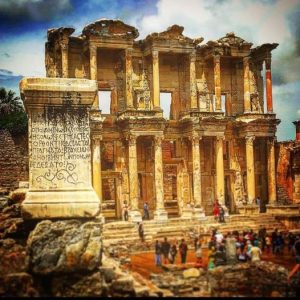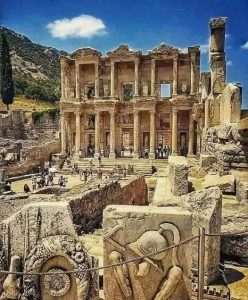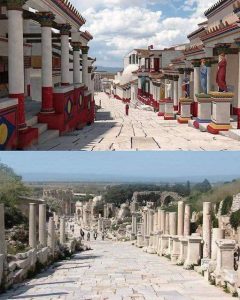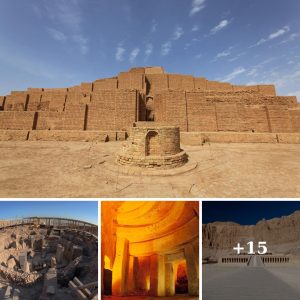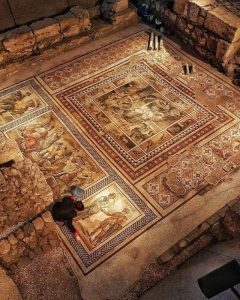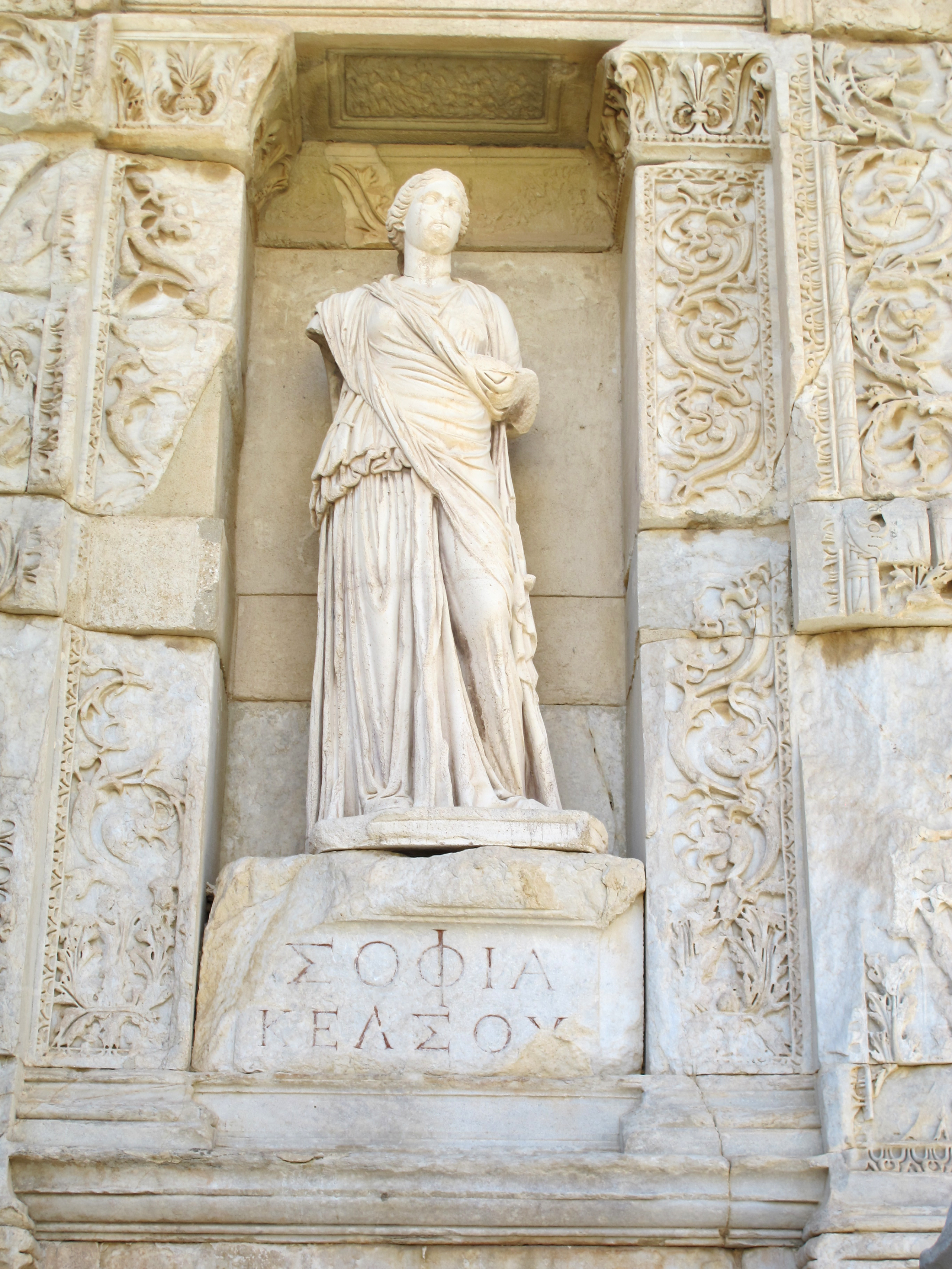
An Icon of Ancient Knowledge
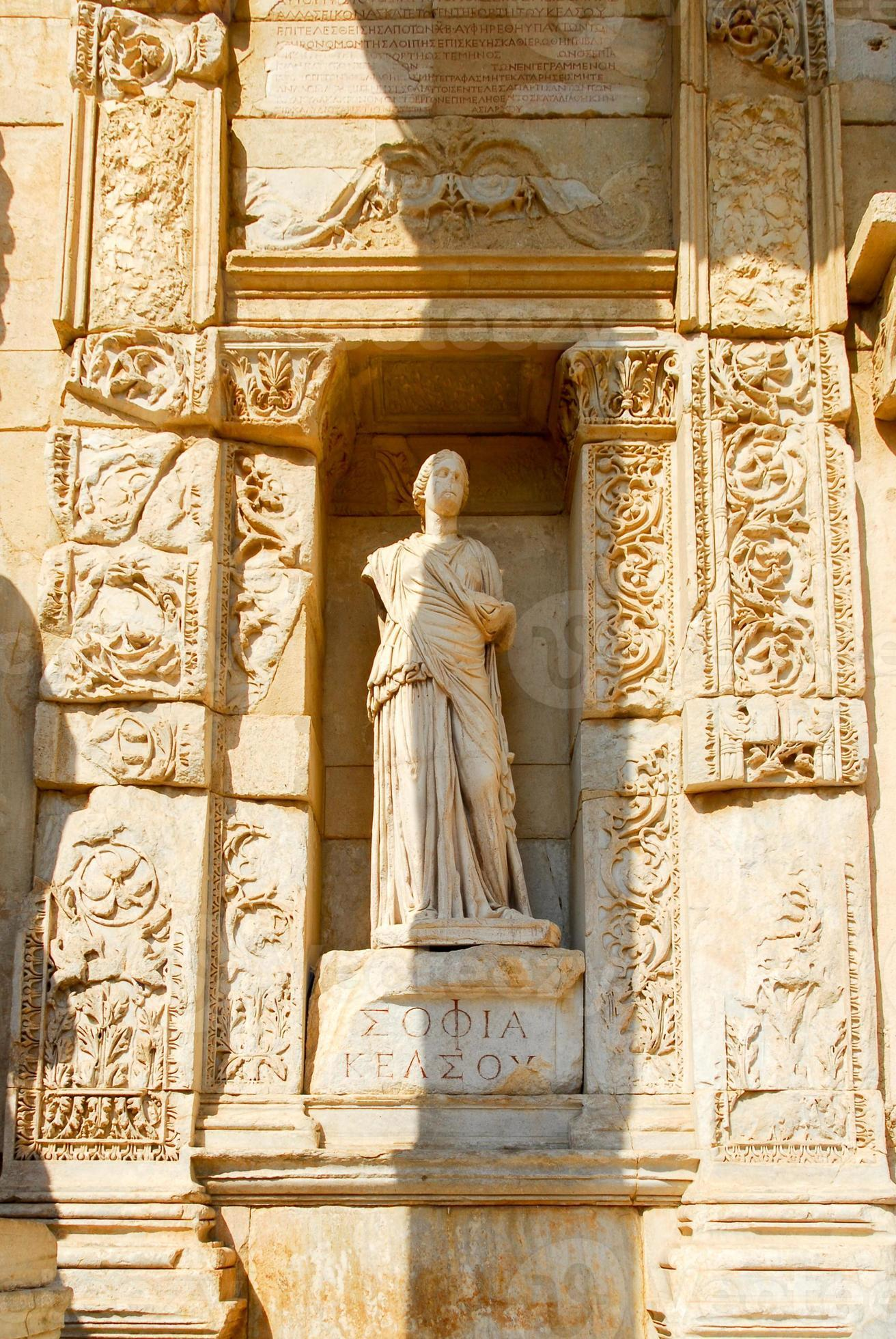
Nestled within the ancient city of Ephesus in present-day Turkey, the Library of Celsus stands as a testament to the intellectual prowess and architectural splendor of the Greco-Roman world. Built in the 2nd century AD, this grand edifice served as a repository of knowledge, housing thousands of scrolls and manuscripts, and symbolizing the cultural vibrancy of Ephesus during its heyday. As one of the most iconic structures of antiquity, the Library of Celsus continues to captivate visitors with its majestic façade and rich historical significance.
Unveiling the Architectural Marvel: Design and Construction
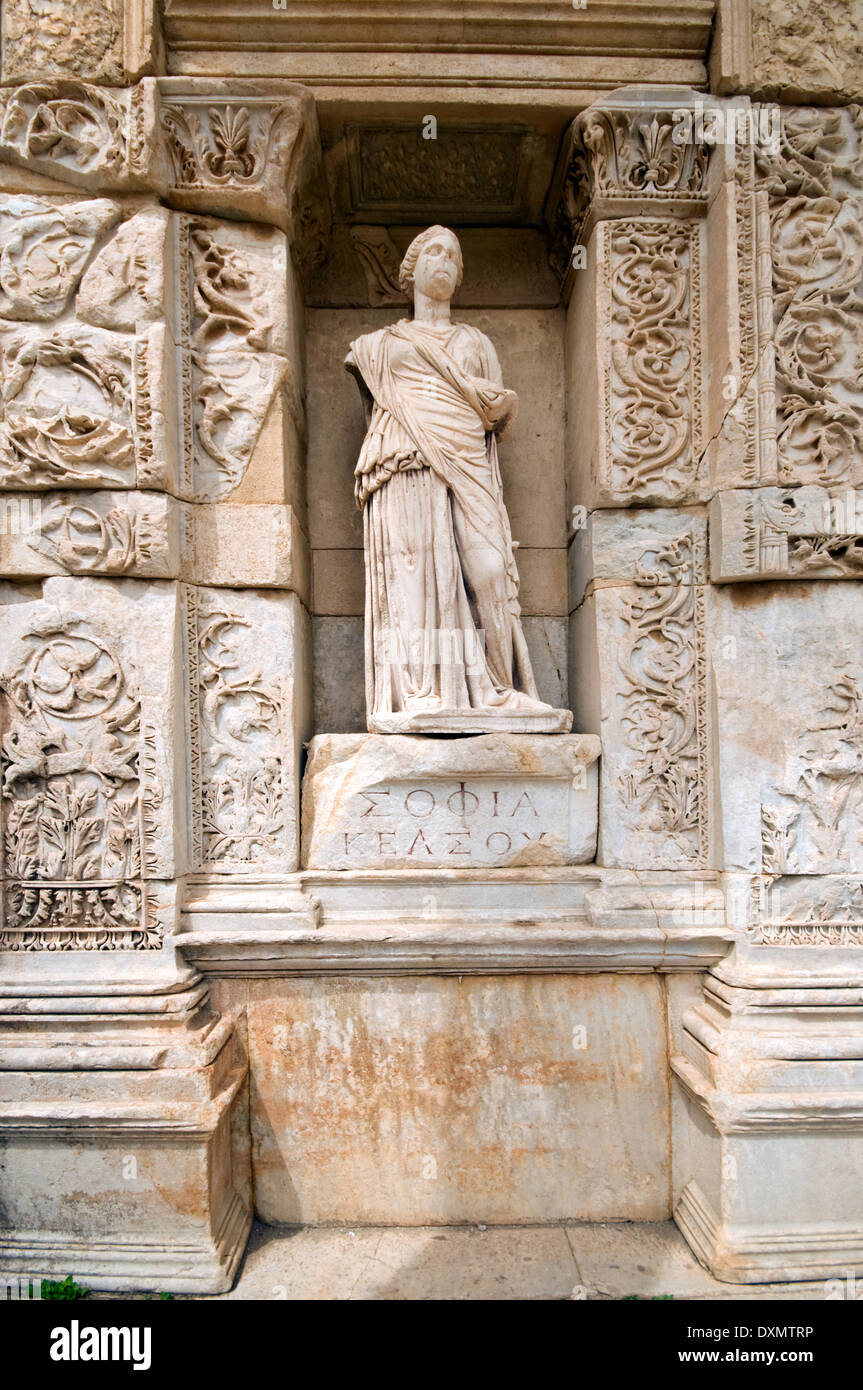
The Library of Celsus, commissioned by the Roman senator Tiberius Julius Celsus Polemaeanus in honor of his father, Celsus, was a marvel of ancient engineering and design. Constructed in the architectural style known as Roman Corinthian, the library featured a striking façade adorned with columns, statues, and intricate reliefs depicting scenes from mythology and literature. Its interior housed a vast collection of scrolls and manuscripts, organized within niches and shelves lining the walls, providing a sanctuary for scholars and intellectuals to pursue knowledge and scholarship.
The Cultural Heartbeat of Ephesus: Role and Significance
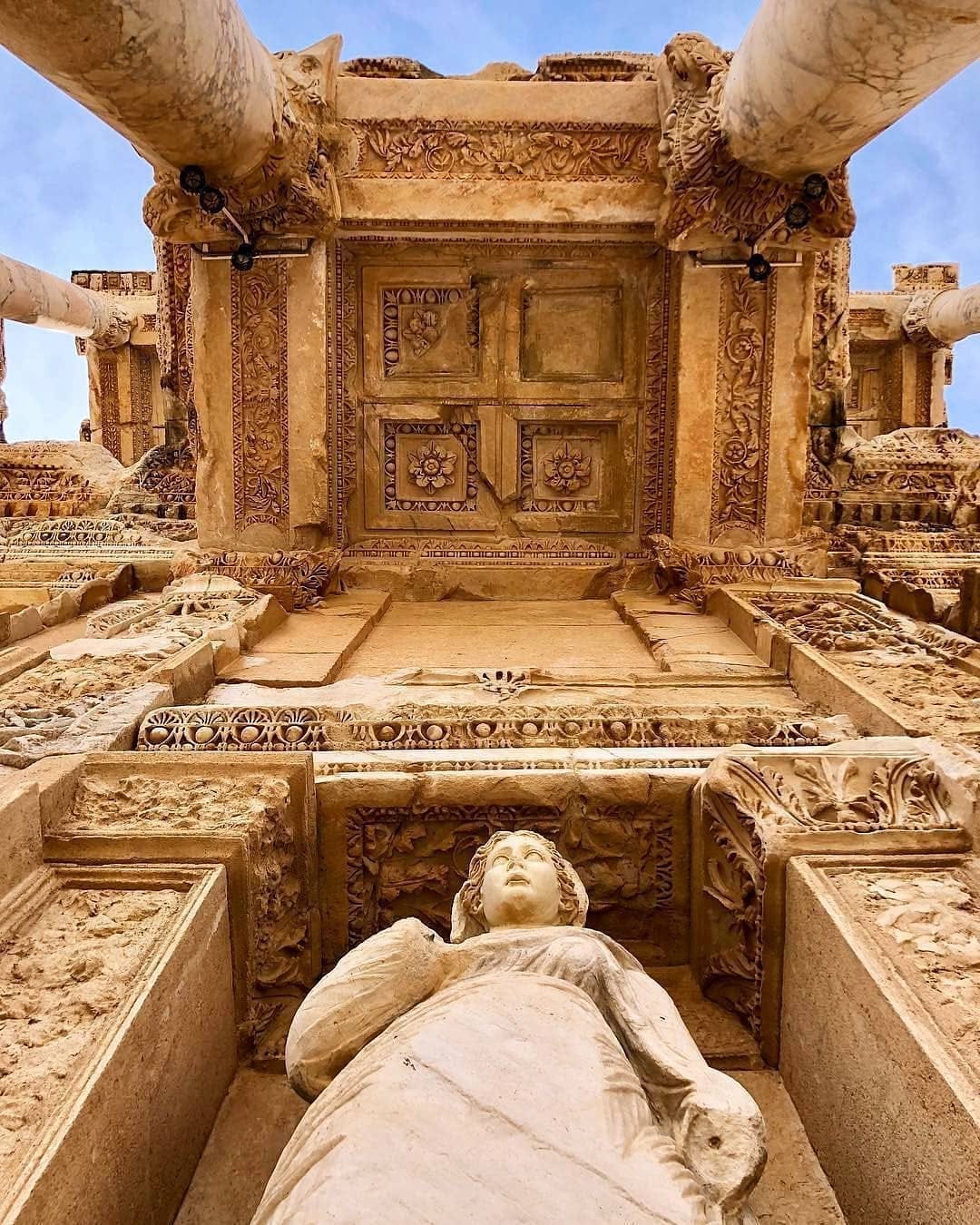
As the cultural heartbeat of Ephesus, the Library of Celsus played a pivotal role in shaping the intellectual landscape of the ancient world. It served not only as a repository of written knowledge but also as a center for philosophical discourse, academic inquiry, and public engagement. Scholars from far and wide flocked to Ephesus to study in its hallowed halls, exchanging ideas and insights that would shape the course of human thought for centuries to come. The library’s influence extended beyond the boundaries of Ephesus, leaving an indelible mark on the intellectual history of the Mediterranean world.
Preserving the Legacy: Archaeological Discoveries and Conservation Efforts
Today, the Library of Celsus stands as a testament to the enduring legacy of ancient Ephesus and the remarkable achievements of its inhabitants. Excavations and archaeological investigations have revealed insights into the construction techniques, layout, and function of this iconic structure, enriching our understanding of ancient library architecture. Conservation efforts have sought to preserve and protect the library’s fragile remains, ensuring that future generations can continue to marvel at its beauty and appreciate its cultural significance. As a symbol of human ingenuity and the pursuit of knowledge, the Library of Celsus remains a beacon of inspiration for scholars, historians, and visitors alike.
Reflecting on Archaeological Endeavors: Insights and Discoveries
The excavation and study of the Library of Celsus offer valuable insights into the cultural, social, and intellectual life of ancient Ephesus. Through meticulous archaeological research and interpretation, scholars continue to unravel the mysteries surrounding this iconic structure, shedding light on its role in the ancient world and its significance for posterity. As we delve deeper into the annals of history, we gain a deeper appreciation for the ingenuity and creativity of past civilizations, and the enduring legacy they have bequeathed to humanity.
